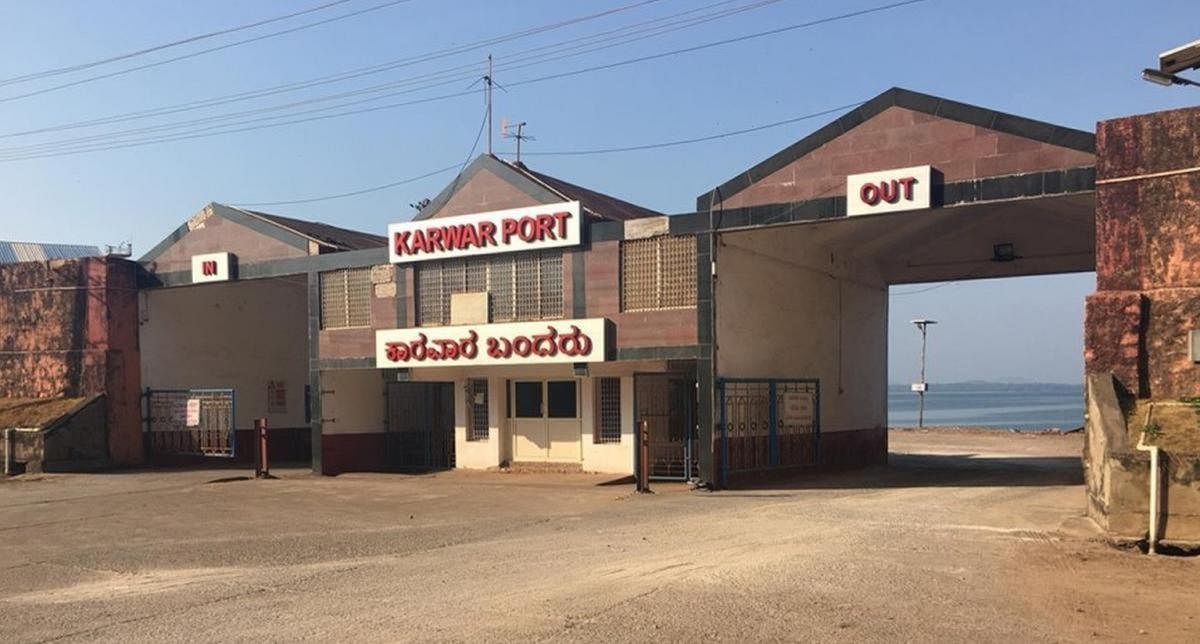
The fusion of beautiful coastline, mountains and a fertile riverbed in Karwar has impressed poets and scientists alike. The coastline, demarcated as one of the 12 critically vulnerable coastal areas (CVCA) by the coastal regulation zone authority (CRZ), is unique and ecologically significant for the entire region. The Government of Karnataka proposed a Rs 1,900 crore plan to expand the Karwar port in 2017. The proposed project will add five berths to the port, enhancing the existing capacity from 3 million tons per annum (MTPA) to 7.5 MTPA. It requires the construction of a 1.35 km-long breakwater to reduce the intensity of waves hitting the berths. The fishing communities along the coastline challenged the project as it directly threatens coastal ecology, their livelihood and wellbeing.
The Directorate of Ports chose to limit the size of the expansion to less than 5 MPTA so that the environmental clearance (EC) proposal would be appraised by the state-level agency rather than the central Ministry of Environment, Forest and Climate Change (MoEF&CC) in Delhi. In a public hearing for the project, people raised questions about land acquisition, the project’s technical plans, including dredging of a 12 km-long channel for navigation of large vessels, potential increases in water pollution and turbidity due to high traffic volumes. Their major concerns were about the cumulative impacts of the port expansion and other projects on marine life and subsequent shrinking of their fishing grounds and fish catches. Despite these serious concerns, the State Environmental Impact Assessment Authority (SEIAA) granted an EC for the project on January 23, 2019.
Challenging the EC
The Karwar fishing community approached the MoEF&CC in May 2019 and requested it to revoke the EC issued by the SEIAA. They argued that the proposed project is located within a 5 km radius of an eco-sensitive zone designated under the Coastal Regulation Zone Notification 2011, and as such, as per the EIA Notification of 2006, should be reviewed by the MOEF&CC.
This argument is in line with the recent judgement in G Sundarrajan vs Union of India and Others (Appeal No 60 of 2018) adjudicated by the National Green Tribunal (NGT). Another ground for challenging the EC relates to lack of attention to cumulative impacts as the government conveniently ignored the fact that the port would have a total capacity of 7.5 MTPA, not 4.5 MTPA as argued by the project proponent.
Additionally, the fishermen’s association argued that the project proponent provided false and misleading information in the environmental impact assessment (EIA) report to get the EC from the SEIAA.
Industry finds a way
The MOEF&CC acknowledged the concerns expressed by the fishermen’s association and sent a letter to the Karnataka SEIAA in June 2019. It asked the SEIAA to “reconsider the decision and take appropriate action with respect to the complaint.” While the fishermen were waiting for a resolution, the Karnataka State Coastal Zone Management Authority (KSCZMA) granted a separate clearance to build a 1.35 km-long breakwater. The port authority quickly geared up its heavy equipment, started construction in December 2019, and informed the fishermen that the breakwater is a separate activity from the expansion of the port for which the EC is still under review.
The KSCZMA endorsed that position of the project proponent and naively presumed that their approval of the breakwater would have no repercussions for the pending decision on the EC or the marine environment.
Competence questioned
The KSCZMA is the prime environmental regulatory agency, with a mandate to protect and improve the quality of the coastal environment. The trivial conditions laid out for the clearance of the breakwater -- such as no dumping in the sea of sewage from the construction activities -- raise serious doubts about the KSCZMA’s competence to objectively assess the environmental risk of the project. It is unfathomable how the agency can view the construction of a port and a breakwater as separate entities.
How can they dodge the question raised by the fishing community and scientists on the potential cumulative impacts of the port on the critically vulnerable coastal zone located 3 km away? How can they not recognize the misleading and missing information from the EIA report submitted by the project proponent for seeking the EC?
The KSCZMA and the other authorities involved at the state level cannot attribute such lapses to lack of inter-agency communication.
The KSCZMA, SEIAA, and other environmental agencies involved in granting the EC have several overlapping members and are often overseen by the same senior-level officer from the Department of Forest, Ecology, and Environment in Bengaluru.
Whatever the explanation is, it is abundantly clear that the breakwater clearance paves the way for the port expansion and, ultimately, this will have serious negative impact on the coastal environment and the directly affected communities.
(Hegde and Diduck are Post-doctoral Fellow and Professor, respectively, at the University of Winnipeg, Canada; Patel is Associate Professor, Menno Simons College, Winnipeg)